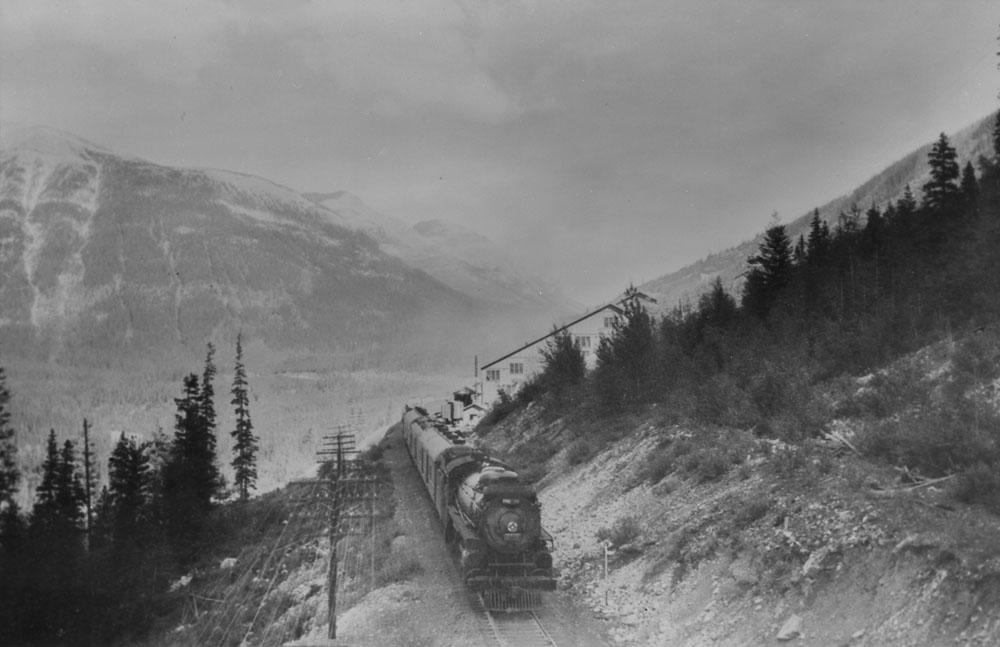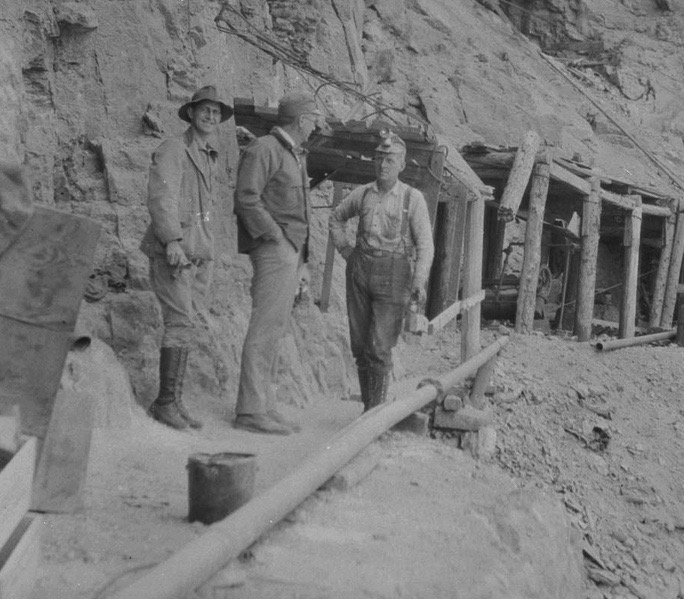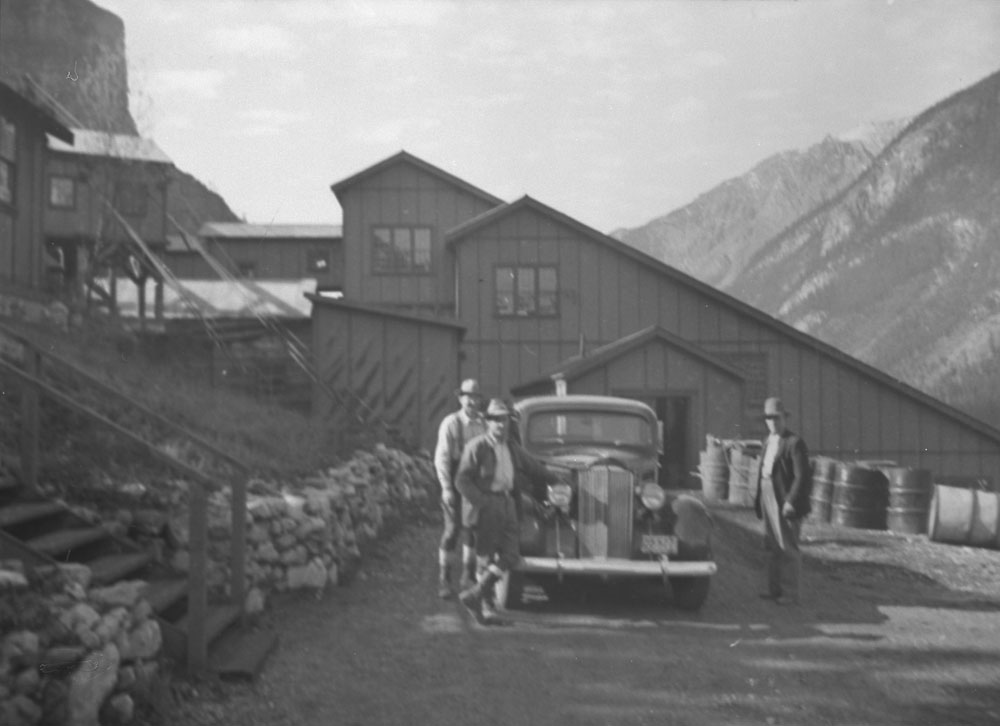Mining Report – Field BC to Golden BC
The Miner – October 7, 1897

In the year 1886 Mr. R.G. McConnell, of the Geological Survey department, made an examination of the Rocky mountain range comprised within the belt of country following the line of the Canadian Pacific Railway along the Bow and Kicking Horse valleys from Banff westward to Golden, the same district having previously in 1858 been partly examined by Dr. Hector. In the notes upon the economic minerals of the district in question, Mr. McConnell remarks that the section of the mountains in the vicinity of the railway contains a variety of mineral deposits and has ever indication of becoming an important mining region.
The cretaceous beds of the Cascade trough hold a number of seams of excellent coal, while farther west the Cambrian and cambro-silurian limestones and schists which cover most of the country between Silver City and the Columbia are almost everywhere metalliferous, and few mountains have been prospected in this district which have not yielded ore of some kind.
Prospecting in this district has been actively and successfully engaged in, and a number of valuable discoveries have been made. Up the Ottertail creek, where it is joined from the south by the Wet Feet creek, is found one of best ore scums in the country. The ore in this locality is an argentiferous galena associated with some copper, zinc and gold, and occurs in small calcite veins running parallel, or nearby so, to the strike of the schists, shales and lime stones which form the country rock of the district. The seams are small, seldom exceeding eighteen inches, but the ore contains a high percentage of silver. On the Ottertail the Anglo-Canadian Mining Co. of Toronto have a number of claims, on some of which development work has been done. Thomas Hebson also has a most promising property some twelve miles up the creek, upon which he has from year to year done considerable work with most gratifying results. Near the C.P.R. track is another claim known as the “Sunday claim, now under bond to Mr. W.R. Lindsay of London, upon which development work has been resumed during the past few days and from which some very fine samples of galena and copper have been taken.

Near Field there has been opened up the Monarch and Cornucopia claims on Mount Stephen and the former present a favorable appearance, showing over six feet of solid galena. The line is deposited in what miners call a “blanket lode.” It has been traced along the face of the mountain for several hundred yards and further exploration has resulted in the discovery of a nine-foot deposit. The galena is low grade in silver, containing from four to eleven ounces silver to the ton, but possesses compensating advantages in the extent of the deposit, the easy and comparatively inexpensive manner in which it can be worked and in its proximity to the railway being situated on a cliff almost overhanging the railway, just east of the station at Field. The ore averages about sixty percent in lead and occurs in irregular chambers, pockets and other deposits in the limestone. The mine was discovered in 1884 and has shipped several hundred tons of ore. A considerable amount of work has been done on the outside, consisting of a tramway galleried out of the face of the mountain leading to the ore bins and a gravity from thence to the ore bins on the railroad.
The ores found in the vicinity of Field have been very pure galena, low grade in silver and containing occasionally a small percentage of zinc. It is understood that it is the intention of the owners to erect a concentrator near the railway and utilize the waters of the Kicking Horse river for operating the concentrator and other mining machinery.
About two miles west of Field several locations have been made during the present summer, the later finds being leads of copper carrying high values, though the leads are not large. Messrs L.D. Carlin and Yel Carryer of Field have made their locations there quite recently.

In the Vermillion pass, which is south-east of Field and which cuts the divide about opposite Castle mountain, there have been several locations made by T.E. Wilson, R.E. Campbell, Dr. Lindsay and others. On these claims are two large leads carrying gold, silver, lead and copper in paying quantities, the assays averaging about $65 to the ton. There is a magnificent water-power in the vicinity and there is every facility for concentrating the ore close to the claims.

The most extensive development work undertaken this year in the section of the northern East Kootenay now being dealt with is that being done by the Channe Mining Co. of Vancouver on a group of claims situate about six miles from the mouth of Ice river, which flows into the Kicking Horse river at a point near Leanchoil station on the C.P.R., about 17 miles east Golden. Here are five claims, located this year by T.E. Wilson, E.W. Peyto, Major Walker, D. McDougall and Hon. Joseph Martin. The Channe Co. are developing the Bookrest and Golden Hope claims, being those located by Wilson and Peyto. As stated in our last issue, a force of men – eight in number – are now sinking shafts on these two claims and will continue the work during the winter months, unless prevented by severe weather. The distance to these claims in a direct line from the railway does not exceed five miles, while the distance by the present pack-trail is about sixteen miles by way of the Beaverfoot and Ice rivers. Although the claims are quite high they are easy to access, and by altering the course of the present trail the distance to the railway by trail can be considerably shortened. The ore is remarkably rich in gold, silver and copper, an in character is a white quartz intermingled with grey copper. The company expert to make a trial shipment this fall. The portion of the district in question lying north of the railway has not been prospected to any great extent, but it is believed that rich discoveries will yet be made in all the belt of country following the Kicking Horse river from the summit of the Rockies to the Columbia river. Several prospectors have been over the country tributary to the headwaters of the Upper Kootenay river, which rises close to the headwater of the Beaverfoot river, and also the country tributary to the headwaters of the Beaverfoot river, and also the country tributary to the headwaters of Elk river, which rises near the head of the Kanannaskis river, and they report these districts as very rich in gold, silver and copper, but owning to their inaccessibility at the present time no locations have been made there. There are on the Upper Kootenay and Elk rivers immense tracts of timber lands which will become valuable when the southern portion of East Kootenay has become more thickly settled, as it is sure to become within the next two years. On the Beaverfoot river there are also extensive timber limits, one of which is owned by Mr. W.C. Wells, of Palliser mills.
